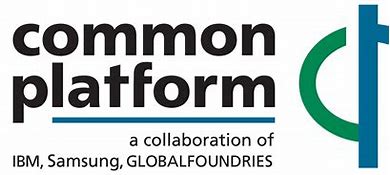
When I do a root cause analysis of Intel’s problem it is very simple. If Intel wants to continue to be a leading-edge semiconductor manufacturer, they need to fill their fabs, all of their fabs. Clearly several things need to happen in order to do that but the one that most interests me is on the foundry side.
I think we can all agree that it is important for Intel to succeed. The United States needs to stay in semiconductor manufacturing and the world needs a second trusted foundry. After the formal Intel Foundry launch the first thing I thought of was for Intel to acquire GlobalFoundries to buy a channel and accelerate the business of filling fabs. GF is stuck at 14nm (which they licensed from Samsung) so it seemed like a good fit. Instead, Intel tried to buy Tower Semiconductor which I felt was a good move as well. The semiconductor foundry business is a marathon not a sprint, but this would have sped things up for sure.
Unfortunately, the sale of Tower Semiconductor to Intel did not go through due to regulatory hurdles. The acquisition was blocked by antitrust regulators in multiple jurisdictions, including the U.S. Federal Trade Commission (FTC) and Chinese authorities. To me this was political nonsense. The sale should have been approved to add a third horse in a two-horse race (TSMC and Samsung Foundry) for the greater good of the semiconductor industry.
Meanwhile, TSMC is racing forward with new fab partnerships that have changed the foundry business. In November of 2021 TSMC announced a partnership with the Japanese government, Sony, and DENSO (automotive) for fabs in Japan. The first one opened in February of 2024, making 28nm wafers. A second FinFET fab will be added for production in 2027.
TSMC also announced a partnership with Robert Bosch GmbH, Infineon Technologies AG, and NXP Semiconductors N.V. to establish the European Semiconductor Manufacturing Company (ESMC) in Dresden, Germany. A 28nm fab is being built with production starting in 2027 and I would guess more fabs will follow.
The other noteworthy foundry partnership is Rapidus in Japan. Rapidus was founded with backing from eight major Japanese companies: Denso, Kioxia, MUFG Bank, NEC, NTT, SoftBank, Sony, and Toyota. It is scheduled to be a 2nm fab, in partnership with IBM, with production starting in 2027. To me this was a missed opportunity for Intel.
I do not have high hopes for this partnership since it involves IBM technology. I remember back in 2004 when the Common Platform Alliance was launched. It was a partnership between IBM, Samsung, and Chartered Semiconductor (later acquired by GF). The goal was to standardize process technologies (PDKs) across their fabs so a customer could take one design to multiple manufacturing sources. This also enabled a shared ecosystem of EDA and IP which as we know is a big deal.
TSMC was rising in prominence with increased market share at 40nm, so this was a NOT TSMC competitive move at 28nm. Unfortunately, it used the IBM process recipe which historically is not high yielding technology. This was the HKMG gate-first versus gate-last controversy. Common Platform used IBM’s gate-first technology and did not yield. TSMC followed Intel with gate-last and won the 28nm node by a large margin and that was the end of the Common Platform Alliance.
As I have said before Intel needs to pivot. Fabs are getting more expensive to build and filling them has never been harder. Independently building the required ecosystem to compete with TSMC is another major financial challenge. Launching an Intel Common Foundry Platform Alliance and providing other foundries (Samsung, UMC, Tower Semiconductor, GlobalFoundries, etc…) unified access to Intel manufacturing can fill the Intel fabs and packaging facilities, absolutely.
Also Read:
What would you do if you were the CEO of Intel?
Intel Presents the Final Frontier of Transistor Architecture at IEDM
Intel – Everyone’s Favourite Second Source?
Share this post via:





Comments
9 Replies to “The Intel Common Platform Foundry Alliance”
You must register or log in to view/post comments.